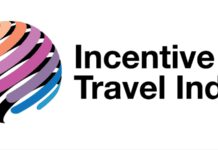
Hybrid and remote workforces are different — and so may be what works for them in terms of incentives, rewards and recognition now that the corporate world has learned the benefits of remote and hybrid workforces. A new study by the Incentive Research Foundation (IRF), The Role of Incentives in Today’s Decentralized Workforce: Attract, Retain & Build Culture, explores what companies need to do now to attract, retain and motivate hybrid and remote workforces.
And the need to do so was evident in the study, which IRF conducted in March of 1,000 employees and managers. The vast majority of those surveyed — 82% of employees and 84% of managers — said they are either happy with their current level of remote work or wanted even more opportunities to work off-site. In fact, they value it so much that about 30% were willing to take a significant pay cut (7%) or look for another job (23%) if they couldn’t be out of the office as much as they’d like. This trend is even stronger among those between 25 and 44 years old and women.
While about a third of the managers said they thought their employees were more productive when working on site, almost half said they thought their hybrid and remote workeforce staff were more productive than their fully in-office staff.
Hybrid and Remote Workforce Challenges
But that doesn’t mean that this new-to-some hybrid and remote workforce perk doesn’t come with challenges. Even though almost two-thirds of both managers and employees felt they were most product when working hybrid or fully remote — and just five of the 424 managers surveyed said they weren’t concerned about the unique challenges facing remote workers —the majority of both managers and employees said they had concerns about isolation, communication and more difficulty in exchanging ideas and information. Other concerns managers mentioned about their off-site workers included workforce culture, distractions, lack of motivation, inconsistent access to IT, cybersecurity threats, and difficulties in onboarding remote staff. On the remote employee side, additional concerns included loneliness, loss of peer collaboration, being left out of the decision-making process, not being consulted for ideas, lack of work/life balance, out-of-pocket costs for equipment, isolation, poor communication and micro-management.
One key to managing these challenges for hybrid and remote workforces, the survey found, can be found in how you incentivize a full- or part-time remote workforce. “Incentives have an important role to play motivating direct and indirect employees in the era of the Great Resignation, remote work and labor shortages,” said Stephanie Harries, IRF President. “The workforce has fundamentally changed, and incentive program design needs to be adapted to align with these new workforce realities.”
One thing that works, whether off- or on-site, is one-to-one appreciation from a direct manager, which respondents ranked as the most motivating form of recognition. Peer-to-peer recognition platforms also can help increase engagement and help remote workers feel less isolation, and intangible rewards such as interesting work, autonomy and growth opportunities also help keep staff motivated. For hybrid and remote workforces in particular, autonomy, flextime and paid time off were at the top of the rewards list, though points, personal gifts, group meals/celebrations and peer-to-peer recognition programs also earned a mention.
That doesn’t mean that hybrid and remote workforces don’t still like tangible rewards too, however. The study found that employees also value cash, gift cards, gifts, points and individual travel. The best ways to increase engagement and retention specifically were compensation, work environment and “other tangible rewards and incentives.”
Access the full study on the IRF’s website.
You Might Also Be Interested In
Top Incentive Trends: Budgets on the Rise in 2022










